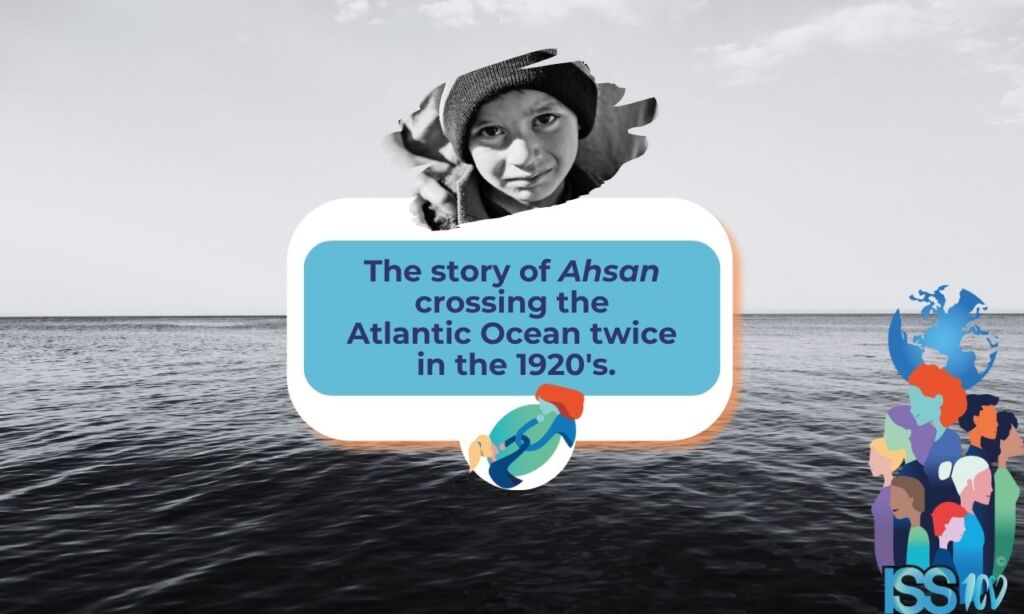
The story of Ahsan, crossing the Atlantic Ocean twice.
- Written by: Ana María Baños Gómez, 3rd year International Relations and Communications Student at University Pontificia Comillas Madrid, Communications Intern.
- Restoring links
Crossing the Atlantic Ocean in the 1920s as a 10-year-old was a hard mission to accomplish. The risks of crossing the sea under dubious conditions and less than decent hygiene conditions would surely have disturbed or even scared an adult. Now imagine going through this not once, but twice, as a child.
10-year-old Ahsan from Syria is one of ISS’ earliest beneficiaries of cross border social casework. Living in the after war period in France, this boy tried to reach the United States through New York in hopes for a better life. Both of the times he tried to cross the Atlantic, he was turned back by authorities. The United States had established a quota for immigration at the time of 81 people a year. This number had been established prior to Ahsan’s arrival, which left him with no possibilities to start a life in America.
In the 1920s, ISS (then named the International Migration Service) consisted of Service Bureaus located in the strategic cities of Prague, Warsaw, Paris, Cherbourg, Le Havre, Antwerp, Athens, Constantinople/Istanbul and Ellis Island in New York.
Moved by the traumatic experience of 10-year-old Ahsan and other similar cases, ISS France, one of the earliest ISS members, decided to arrange temporary care for people from Syria, Persia and Armenia in France.
It’s cases like Ahsan’s that have inspired ISS to help individuals crossing borders all over the world. Today, ISS members are present in more than 120 countries and assist children and families separated across borders by providing socio-legal counsel and psychological support.
Source
Fehrenbach, Heide. “War Orphans and Postfascist Families: Kinship and Belonging after 1945” in F. Biess. 2010.